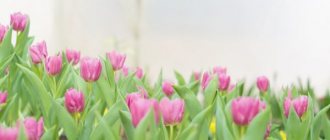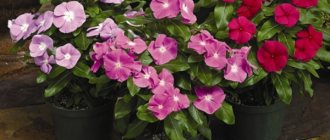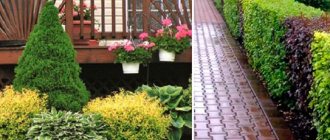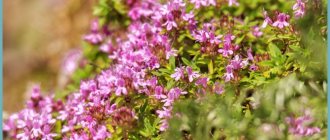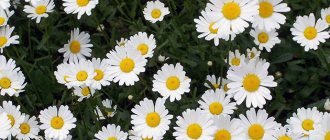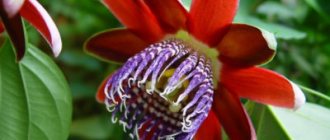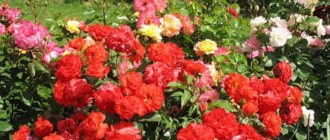Zinnia is popular among gardeners, which is confirmed by the presence of a large assortment in stores. The plant belongs to the Asteraceae Family.
Its homeland is the Western Hemisphere. Herbs, subshrubs and shrubs are included by biologists in this Family. Representatives of this flora are perennials. The temperate climate of the Eastern Hemisphere is suitable for the growth of annuals.
Plant characteristics
Zinnia is a plant belonging to the Asteraceae family. This flower owes its name to Carl Lineus, who in 1759 named it in honor of the director of the botanical garden Johann Zinn.
Zinnia belongs to the genus of perennial and annual herbs, grows quite quickly and is a cross-pollinated plant. Depending on the variety, it may have an erect or spreading stem or form a small bush. The height ranges from 0.15 to 1.1 m. The powerful, strong stem is covered with hard fibers. It bears elongated oval-shaped leaves, which are located whorled or opposite.
On a note! The stem of zinnia is quite strong, which is why it does not need a garter (except for special weather conditions - strong wind or rain), and cut flowers remain fresh for 1-1.5 weeks!
Zinnia is unpretentious, but in order for it to bloom as magnificently and abundantly as possible, it needs a lot of sunlight. For this reason, it is recommended to plant the plant in a warm, sunny area, protected from drafts. It does not like high humidity - watering should be rare, but plentiful.
Bloom
Zinnia blooms incredibly spectacularly, forming complex large inflorescences at the ends of the stems. Their diameter can reach 15 cm, and they consist of two types of flowers. The first type is the outer flowers, quite large, reed-shaped, their shape can be elongated oval, elongated or in the form of a tube, which sometimes bifurcates at the end. The second type is tubular flowers. Their sizes are much smaller and, as a rule, they are tubular in shape. They are located in the inner part of the inflorescence.
Zinnia flowers are extremely varied in color. They can be white, cream, red, scarlet, burgundy, orange, bright yellow, pinkish, violet and even lilac. Only blue is missing.
The flowering period of zinnia occurs approximately 55-65 days after sowing in the ground and lasts until late autumn. Individual inflorescences can “live” for 3 days.
Preparation for planting and fertilization
Zinnia is a very heat-loving and sun-loving plant. It is sensitive to frost, so it finishes flowering in early autumn. It is quite demanding on soils, preferring fertile lands with neutral acidity. This condition is dictated by the fact that abundant, long-term flowering takes a lot of energy, and with poor watering and fertilization, the flowers begin to lose their rich color, become smaller, the leaves wither and dry out. The culture is classified as cross-pollinating, but self-pollination is also possible.
The area intended for planting is carefully dug up, fertilized with humus, leaf soil/compost at the rate of 7-10 kg per 1 sq. m. m, mineral fertilizers (potassium sulfate, nitrophoska, superphosphate). The ground is dug up again, leveled and seeds are planted.
The plant must be fed with organic and mineral fertilizers not only immediately after planting, but also throughout the growing season - on average 2-3 times per season. The feeding scheme is as follows:
- The first approach is at the stage of active seedling growth, but long before budding. 1 tbsp. l. urea is diluted in 10 liters of water and watered at the root. As an option, you can use ready-made fertilizer “Flower” (1 tbsp) or its analogues.
- The second approach is at the budding stage. The preparations Raduga and Agricol, aimed at flowering plants, show themselves to be effective. For 10 liters of water take 1 tbsp. l. liquid fertilizer.
- Before fertilizing, it is advisable to treat the soil with wood ash. 2-3 tbsp is enough. l. dry powder per 1 sq. m.
- Before the buds begin to open, it is recommended to spray with the preparation “Bud”. Consumption according to instructions.
Related article:
Lilac flowers
Garden classification
There are 4 main types of zinnias:
- graceful;
- narrow-leaved;
- thin-flowered;
- linearis.
Moreover, according to the garden classification, these species are divided into 3 subspecies: tall zinnias, the stem length of which is from 60 to 90 cm, medium-sized ones - from 0.35 to 0.55 m and low-growing ones with a stem from 0.15 to 0.30 m.
Plants from the first subspecies are usually grown for cutting, and in general they look rather cumbersome in a flower garden. Low-growing zinnias are more versatile, since during the growth process they form neat bushes that are excellent for flower gardens, for growing in pots, and for cutting.
Planting seeds
Zinnia belongs to the category of fast growing plants. In the southern regions, the interval between sowing and flowering takes only two months, in central Russia - about two and a half. Both annual and perennial crops can be grown using seed. Planting in open ground is also allowed, but only in areas with a mild climate and the absence of May frosts. In colder climates, only seedlings are planted, since even minor frosts down to -1 ° C will lead to the death of seedlings.
Seeds need preliminary preparation. They are wrapped in a cotton/linen rag or gauze and well soaked in Epin solution. This technique helps to quickly sort germinating seeds from non-germinating ones. Freshly harvested and old seeds have differences in germination time. The first ones hatch within 3-4 days, the second ones will take about a week.
Related article:
6 types of Rosemary for your garden: Description and secrets of growing
Seeds are planted at the end of March - beginning of April once in peat pots filled with nutritious soil mixture. There should be no more than 2-3 grains in one container, since this plant is not picked. Planting material is deepened into the soil by 1 cm, well moistened and transferred to a sunny place. The room temperature should vary between 21-24 ° C.
Zinnia graceful
Zinnia dainty is the most common species and is mostly grown for cutting. It has a powerful stem, large leaves and luxurious semi-double inflorescences, measuring 12 cm in circumference.
On a note! Modern graceful zinnia has rather dense petals, which strikingly distinguishes it from the plant that appeared at the end of the 18th century. It had small inflorescences and fully corresponded to its name - graceful!
Currently, graceful zinnia has a huge number of varieties, which are divided into separate groups.
- Dahlia-shaped (dahlia-flowered) zinnia. This is the most common group. Its representatives are characterized by large inflorescences - from 11 to 14 cm in diameter, and during the growth process they form a large bush, which can be up to 1.2 m in height. At the same time, the bushes can be both powerful and spreading, and very compact. Dahlia zinnia, as can be seen in the next photo, has lingual flowers with a rounded edge. They are arranged in the form of tiled masonry - one on top of the other.
On a note! Tall dahlia-flowered zinnias amaze with their beauty. Among them, the most famous varieties are Denariz Giants, Russian Size F1 and California Giant zinnia. The diameter of their inflorescences is 15 cm, and the height of the stem reaches 1.2 m. The shade of the baskets can be varied, both monochromatic and two-color. These varieties are grown, like other tall zinnias, for cutting, and they stand in water for up to 20 days.
- Chrysanthemum flowers. Such zinnias have a shorter stem - from 40 to 80 cm. At the same time, the size of their baskets is quite large - 8-16 cm. The varieties that belong to this species are characterized by the pure color of the inflorescences. Reed flowers are always twisted lengthwise into a tube or curled like a curl.
- Pompons. Zinnias that belong to this species are usually bushy and bloom very profusely. They are frost-resistant and produce lush inflorescences from early summer until the end of October. An individual flower can take up to a month to bloom.
- Fantasy. The plant is compact, neat, spherical in shape. The height can reach 0.65 m. The flowers are loose, 8-10 cm in diameter. The petals are narrow, sometimes forked at the ends, and can be curved or twisted, which is why the baskets look like “shaggy”. Representatives of this variety can have very different colors. Flowering begins in mid-June and lasts until frost.
Seedling care
After the pots emerge, you need to carefully monitor the lighting. The light should be bright, but not direct, but diffused. If you leave the seedlings in partial shade, they will quickly stretch out, the leaves will lose color and become faded. In such cases, you will have to fill the container with an additional level of soil to level the height of the seedlings.
Related article:
10 unpretentious, but very beautiful flowers for your garden
Before planting in open ground, seedlings are hardened off. To do this, the pots are taken out into the fresh air every day during the day, gradually increasing the duration of the “walk”. It is recommended to finally transfer zinnia to the garden bed at the end of May, but being firmly convinced that the forecast does not predict return frosts. A distance of 0.3-0.4 m is maintained between the bushes, planting either together with a peat cup or by transshipment.
Pinching seedlings is not necessary, if desired. The procedure is justified if the goal is to grow the bush more lush and with an abundance of flowers. Then the young plants are pinched over 3-4 leaves, when they have already taken root well and have taken root in the garden bed. If there is no such goal, then no action needs to be taken. In this case, large, showy flowers will grow on long stems, which are perfect for home cutting.
Related article:
The proud charm of the garden: 6 of the most beautiful varieties of calla lilies that are grown outdoors
Zinnia angustifolia
The most unpretentious plant to grow and care for is angustifolia zinnia. It has simple flowers, which are in no way inferior in beauty to the group described above. Their hue is often yellow or deep orange. The bushes have a very beautiful spherical shape, are small and often their height does not exceed 0.5 m.
Narrow-leaved zinnia cannot boast as many varieties as graceful, and most representatives are very similar in appearance to marigolds.
Linearis
Quite often, zinnia linearis is confused with thin-flowered zinnia, since it has the same thin and sharp leaves. This species is one of the smallest of all cultivated ones. The branching bush has an almost spherical shape and grows no more than 35 cm in height.
During the flowering period, linearis produces small inflorescences with yellow reed flowers. It is most suitable for growing in small containers or pots; it looks great on alpine hills and in miniature flower beds.
Popular varieties
Represented by four main species, zinnia has an incredible variety, and therefore can easily meet the highest demands of landscape designers of our time.
short
Among the low-growing zinnias you can find both an elegant variety and a narrow-leaved one. The following miniature varieties are very popular with many gardeners:
- The “Liliput” series is a double zinnia that produces fairly large (about 10 cm in circumference) dome-shaped inflorescences. The bush is of medium height - about 0.5 m. It blooms profusely and continuously.
- "Rotcopchen", or "Little Red Riding Hood" is one of the most sought after varieties of graceful pompom zinnia. The plant got its name due to the thick red color of the petals, which do not lose their richness even under strong rays of the sun. “Little Red Riding Hood” is a low bush, the height of which can be 0.55 m and has a spherical shape. Covered with dense inflorescences - round or in the shape of a truncated cone.
- “Tom-Thumb”, or “Tom-Thumb” - this flower also belongs to the graceful zinnia variety. Its bushes are small, up to 45 cm in height, the flowers are bright red. This variety is very similar to “Little Red Riding Hood”, but its inflorescences are not so rounded - in this case the shape is more flattened.
- "Short Staff" is one of the most popular representatives of low-growing zinnias. The height of the bush is often no more than 25 cm, but it produces quite large inflorescences - about 10 cm in diameter. Flowers can have different colors: coral, cherry, red and white.
Varieties of dahlia zinnia
Among dahlia zinnias, the most popular varieties are:
- “Crimson Monarch” - this variety produces an incredibly beautiful spreading bush, the height of which can range from 65 to 75 cm. During the flowering period, double inflorescences are formed, which can be either dense or loose. Their color is dark red, diameter is about 14 cm. An individual flower can “live” from 17 to 26 days. The flowering period begins in early summer and lasts until the first frost.
- “Violet” is a spreading bush, about 65-78 cm high. During the flowering period, dense inflorescences are formed, the diameter of which is from 11 to 13 cm. The inflorescences are double, purple tones. It begins to bloom in July and continues until frost.
- “Orange King” - the height of the plant is from 65 to 75 cm. The inflorescences are large, painted in a bright red-orange color. Their density is average, diameter is from 13 to 15 cm. The flowers are double.
- “Lavender Queen” is a relatively tall plant, about 0.85 m. The shrub is spreading, the inflorescences are dense, double, about 12 cm in diameter. The hue is purple.
- “Purple Prince” - the height of the bush varies between 60-65 cm. During the flowering period it produces large inflorescences with a purple tint. The flowering period lasts from the last ten days of June until the first frost.
- “Envy” is a plant about 70 cm high, the inflorescence circumference is approximately 12-13 cm. The most popular variety that looks very advantageous in any flower bed, especially surrounded by pink and purple flowers.
- “Polar Bear” is a medium-sized bush - about 66-69 cm. A compact plant with dense flowers. The inflorescences are dense, 14-15 cm in diameter. Painted white with a greenish tint.
Varieties of zinnia angustifolia
The most common varieties of narrow-leaved zinnia are:
- “Persian Carpet” is a very beautiful plant that in its appearance resembles an oriental carpet. The bush has a pattern made up of flowers of various colors: from bright yellow to rich brown.
- "Glorienshine" is a branched bush with double inflorescences. It blooms profusely throughout the entire flowering period. The flowers are bright orange, with a brown border visible at the tips.
- "CandiStripe" is somewhat similar to the "Persian Carpet" variety. It also has a second name, “Tiger”. The petals of the inflorescences are striped, which is why this plant looks great in a flower bed.
Hybrid varieties
The largest number of hybrid plants was obtained by crossing graceful zinnia and angustifolia zinnia. This tandem produces very expressive bushes with incredibly lush, dense hats and bright patterns. Among the hybrids:
- “ProfusionMixed” series - plant height is from 30 to 35 cm. The bush is dotted with small flowers that are very similar to daisies. However, their color may vary.
- The “Carousel” series is a medium-sized bush, about 60 cm high. The flowers are large, double, and the inflorescences are bicolor. The petals are narrowed at the ends.
- "Shaggy Dog" - on the bushes there are small leaves twisted into tubes. The leaves “look” down.
- "PeppermintStick" is a very interesting hybrid, the petals of the inflorescences of which are painted in a bright yellow-red color.
- "Envy" - the bush has fairly large light green foliage and a very expressive head of flowers.
- "Magellan" is a relatively small plant - approximately 35 cm in height. The inflorescences are densely double dahlia-shaped, their diameter is about 10 cm. The color is coral, pink, orange, salmon, cherry, red, yellow.
- The “Swizzle” series is represented by two varieties - “Cherry Ivory”, the flowers of which have a cream tint at the tips of the reeds, and “Scarlet Yellow” with bright red flowers with a yellow border at the tips.
Bouquet varieties
Zinnia is a unique plant that can be grown both in open ground and in small pots right in the house. It behaves well when cut, and under the right conditions it will last in a bouquet for two weeks.
On a note! Zinnia is good because it has a very weak aroma, and therefore will not cause discomfort to those people who are sensitive to the floral smell!
If zinnia interests you solely as a bouquet flower, then we advise you to use mixtures of varieties for cutting. Among the most successful species in this regard will be the aforementioned California Giant zinnia. The bushes can reach a meter in height and will give you large inflorescences of various colors. Among the representatives of this variety you can see white and yellow specimens, cream and purple, red and lilac, as well as all shades of pink and orange. Such a bouquet can stand for at least 12 days.
Zinnia cactus is also a good choice. Its bushes are quite tall - about 90 cm, and the flowers are great for cutting. There are large inflorescences on straight strong stems. It blooms for a long time - from early summer until September, and lasts quite a long time after cutting.
general description
Zinnia inflorescences are hard to miss, they are so striking with their bright shades. Quite large single baskets are supported on strong, stable peduncles, surrounded by ovoid leaves with slightly pointed tips. The flower heads have a multi-row imbricated structure. The outer petals are tightly pressed to each other, rounded at the top and have a small notched bend. The inner petals are arranged vertically, small in size and tubular in structure. Seeds from the peripheral outer rows look like a triangle, up to 1 cm long, from the middle rows they look like a triangular spear, from the central part they are flat and shield-shaped.
Related article:
Properties of nettle, how to use it correctly in the garden
Thanks to its varietal diversity, zinnia is successfully used for decorative design of any landscape areas. Tall varieties (70-90 cm) are ideal for cutting into flowerpots, as well as creating bright “spots” on lawns, medium-growing varieties (40-50 cm) look good in the format of prefabricated flower beds, low-growing varieties (up to 30 cm) are indispensable for decorating borders , garden paths or planting in pots.
Zinnia is easy to combine not only with other flowers, but also with foliage plants and herbs. And all because it is undemanding in cultivation, has no “claims” to almost any neighborhood and boasts an impressive richness of color palette. Bees, butterflies and birds simply adore the culture, so if you want to attract more of these winged creatures to your site, then the best decision is to plant zinnia there. It blooms all summer, and the more often the flowers are plucked, the more new buds will appear.
Related article:
Secrets of growing cloves
Flower zinnia
But be that as it may, zinnia still looks most successful in a flower bed, as you can see by looking at the following photos. Among the flower garden varieties, the most popular are the following:
- Variety series “PersianCarpetMixed” - Hage zinnia. It produces amazingly beautiful semi-double bicolor inflorescences. Here you can find red-white, red-yellow, red-orange and red-lemon combinations. Often, plants from this variety series are grown in huge masses, which from a distance resemble beautiful colorful carpets.
- Any varieties of thin-flowered zinnia will look best in landscape flower beds. Its bushes with reddish stems and small flowers will be a real find for all lovers of neat flower beds.
- Zinnia Linearis is also suitable for growing in a flower garden, but it should be small. An alpine slide would be a great place for it. The most popular varieties for this case will be the varieties “Caramel” with a sharp center and dark yellow petals, as well as “Golden Eye” with small white inflorescences and a cheerful yellow center.
